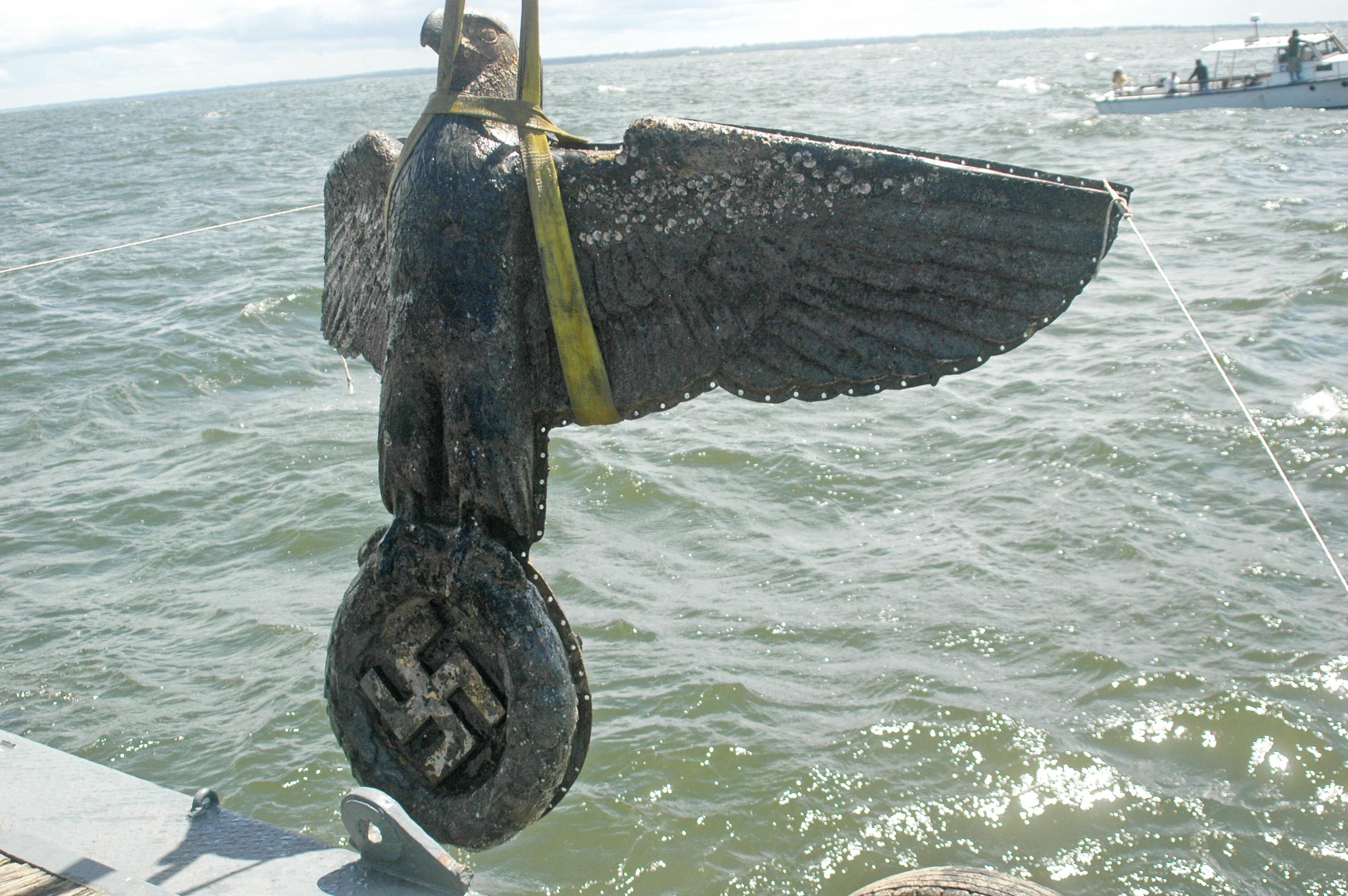RIO DE JANEIRO, BRAZIL – The Uruguayan Judiciary ruled a few days ago in the second instance in favor of the Uruguayan businessmen Alfredo and Felipe Etchegaray (the first was in 2019, after more than a decade of litigation), owners of the relics that their organization has extracted from the wreck of the former German battleship “Admiral Von Graf Spee”.
Read also: The story of German ship Graf Spee’s Nazi eagle Uruguay will have to sell to pay two brothers
The ship was sunk by its captain, Hans Langsdorff, on December 17, 1939, less than four miles from the port of Montevideo, after remaining in its facilities for 72 hours trying to repair it after the battle held days before with a British flotilla led by the heavy cruiser Exeter and the light cruisers HMNZS Achilles and HMS Ajax, which severely damaged it, causing dozens of casualties among dead and wounded.
The Etchegarays intend to sell, mainly, the ship’s rangefinder and its bow mask, an eagle – a traditional German symbol – holding a swastika, which has become a source of international controversy.

Although the Simon Wiesenthal Center warned that its fate should be academic, it has not been the State of Israel that has opposed its sale, but the German government itself for political reasons. However, since its extraction in 2006, the monitoring, insinuations, and direct pressures have been constant and even explicit. Guido Westerwelle, former Foreign Minister and Vice-Chancellor of Germany, did so directly in 2010 during a visit to Uruguay.
Before that, the former Uruguayan Foreign Minister Reynaldo Gargano had issued an internal verbal order to ignore any approach from the interested parties while hiding the file in a piece of furniture inside the Ministry. According to the interested parties, the former Foreign Minister Belela Herrera had also been publicly urged by German diplomats to “bury the ship”, who had also been related to the appeals made against them by the Uruguayan State which, after a brief exhibition of the famous eagle in a hotel, ordered its seizure and hiding in the premises of the former Naval Riflemen Command (FUSNA), today COMIM.
The Etchegaray brothers, who since 2004 and at their own expense have financed these tasks, are known for their liberal and anti-Nazi political affiliation, for which they even offer to destine part of the proceeds of these and other possible rescues of the battleship, to pay homage to the old German resistance to this regime, especially to the Rosa Blanca student organization, as well as accepting that this money could be destined to re-equip the impoverished Uruguayan National Navy with material of totally German origin, adjusting economic participation in this respect.
In Uruguayan territorial waters, either by the movements of ships in the old captaincy of Montevideo during the colonial past, the existence of a Portuguese enclave in these lands (Colonia del Sacramento), the incursions of English or French pirates, the wars of independence, and by the action of complex meteorology, there are abundant naval remains of high value, whose search could be discouraged.
With information from Defensa

